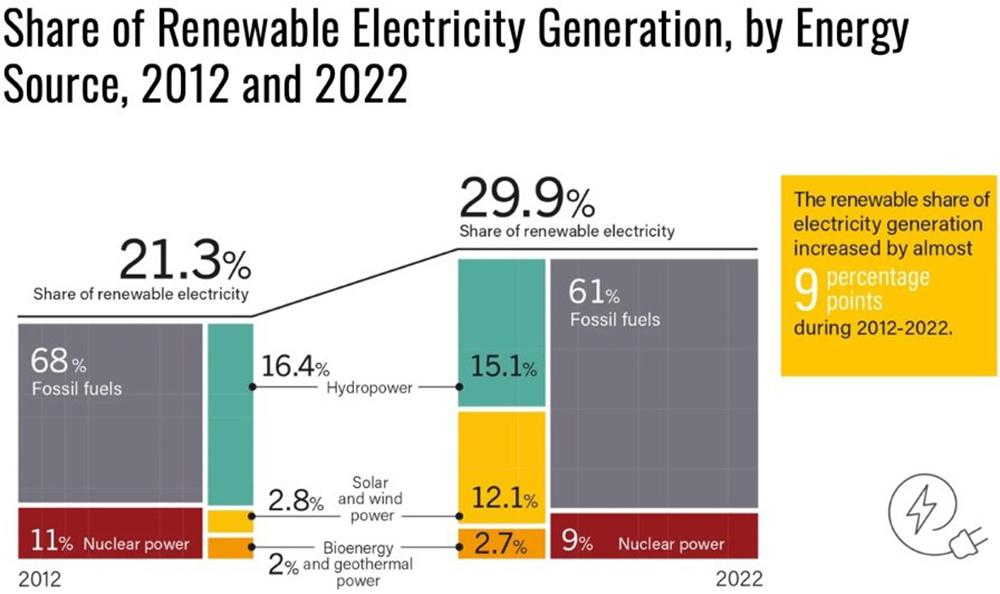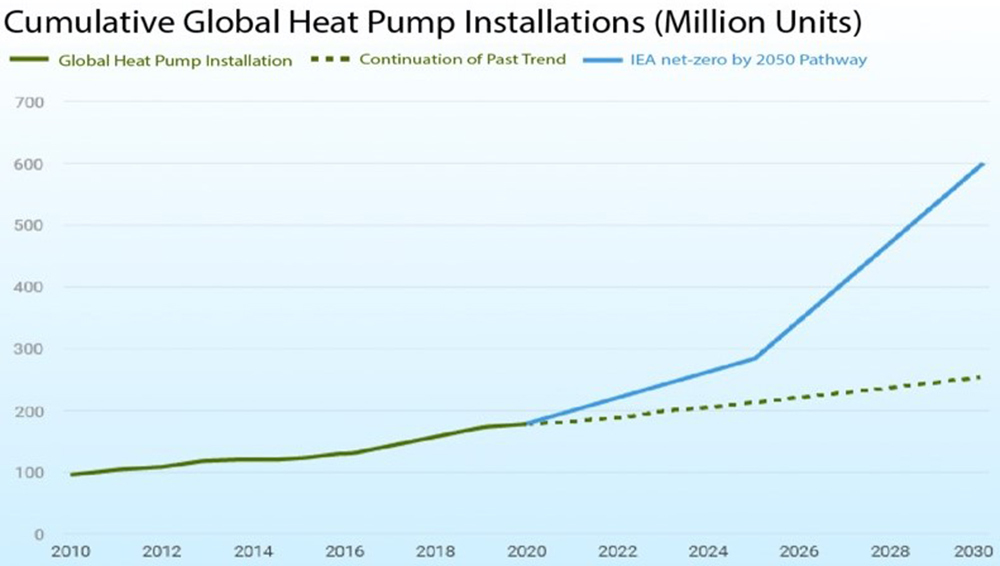First, the bad news. The continuing issue is that, according to the Emissions Gap Report 2022, the international community is falling very short of the Paris goals, with no credible pathway to 1.5°C. Only an urgent system-wide transformation can avoid a climate disaster. By 2030, we must cut emissions by 45 percent to reach 1.5°C and 30 percent for 2°C. In 2022, total global GHG emissions were 58 gigatons, a new absolute record. According to the report, the current policy scenario will result in the same level of emissions in 2030 (about 58 gigatons, avoiding only the increases to 2030).
The most ambitious of the emissions pledges result in only a reduction to about 52 gigatons per year by 2030, far from the levels of 41 and 33 gigatons per year required by the 2.0°C and 1.5°C goals of the Paris Agreement. The world is on track to reach a 2.8°C increase with current policies and 2.4°C with the most stringent pledges this century. This is a much hotter world with more severe climate consequences. It is short-sighted economics, as the long-term damages will likely be much greater than the costs.
Another grave concern is that the fossil fuel industry is still investing heavily in exploration for new production. In 2023, 48 percent of the industry's investments are forecast for traditional oil and gas exploration, or about 500 billion dollars. They do not need it. The IEA has stated that no new oil and gas fields are required to meet the Paris Agreement. Several countries, including Spain, France, Colombia, Greenland, Ecuador, Costa Rica, and Denmark, have formed the Beyond Oil and Gas Alliance to commit to stopping exploration for fossil fuels.
With the above in mind, there is some essential positive news:
- Anticipated spending for energy investments in 2023 is up to a record USD 2.8 trillion, and clean energy investments, at 1.74 trillion, are far ahead of fossil fuels at 1.05 trillion. "The recovery from the slump caused by the COVID-19 pandemic and the response to the global energy crisis have provided a significant boost to clean energy investment. Comparing our estimates for 2023 with the data for 2021, annual clean energy investment has risen much faster than investment in fossil fuels over this period (24% vs. 15%). Our new analysis highlights how the period of intense volatility in fossil fuel markets caused by the Russian Federation's (hereafter "Russia") invasion of Ukraine has accelerated momentum behind the deployment of a range of clean energy technologies, even as it also prompted a short-term scramble for oil and gas supply." 1
The green investments anticipated for 2023 are, in order of importance, renewable power, energy efficiency, grids, electric vehicles (counting only the value of the battery), other battery storage, other end uses, nuclear, low-carbon fuels, and CCUS.
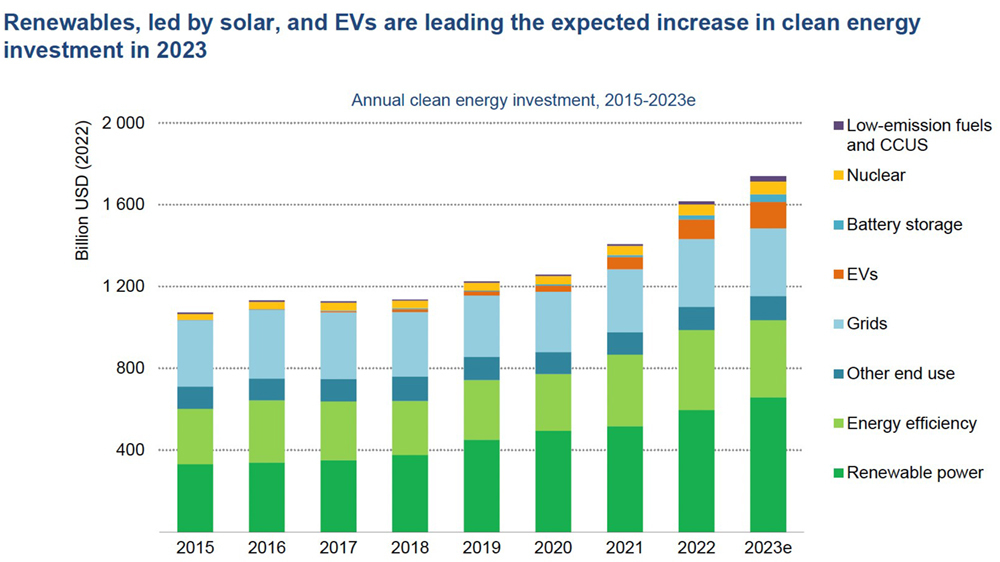 Source: IEA World Energy Investment 2023.
Source: IEA World Energy Investment 2023.
- The share of renewable power (solar, wind, hydro, bioenergy, and geothermal) has increased globally, from 21 to 30 percent of the total electrical power, from 2012 to 2022. It has reached 31.9% in China, 39% in the EU, and 19.4% in the US. The clean electricity capacity in China has grown around 10 percent per year since 2016. However, in China, production from coal-fired plants remains very high, at 60 percent of total electricity production, almost twice that of renewables. Fortunately, coal is growing much slower, about 3 percent annually from 2016 to 2022.
The relative absence of renewable power in most developing and emerging countries represents a significant challenge. They may not have the public funds to build sufficient new infrastructure, and private investments are still limited. For years, fossil fuels were relatively inexpensive. Investing upfront money in new clean energy infrastructure is challenging. In addition, 733 million people were estimated to be without access to electricity in 2022.
- Meanwhile, the share of electricity (including for heat and transport) in the global energy supply has increased steadily, rising from 19% in 2010 to 23% in 2020. This is a slower structural shift, reflecting the growing reliance on electricity to meet energy needs in all end-use sectors. Only in recent years has greater electrification become an active policy.
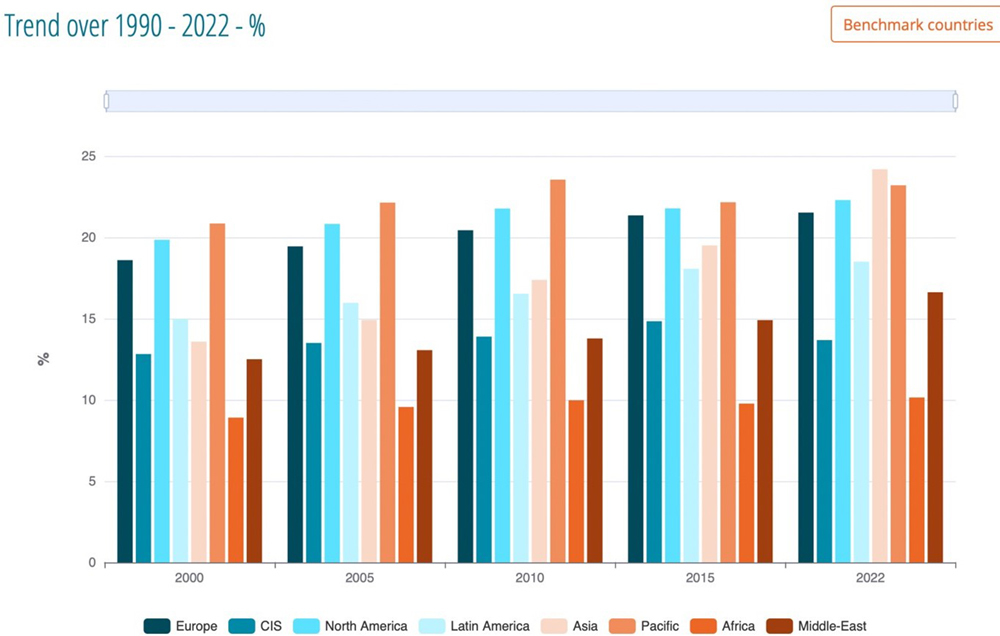 Source: Enerdata.
Source: Enerdata.
- Electric vehicle (EV) sales break new records with exponential growth in China, Europe, and the US. They reached 10 million vehicles in 2022 and are nearing 13 million this year. Many countries have policies for phasing out fossil fuel vehicles. Electric vehicles are essential for cutting emissions in road transport, which accounts for one-sixth of global emissions. The use of EVs and the gradual electrification of our economies call for building integrated electricity grids, which are falling behind even in developed nations. Instead, EV sales are much slower in developing and emerging countries due to the high purchase price and lack of charging points.
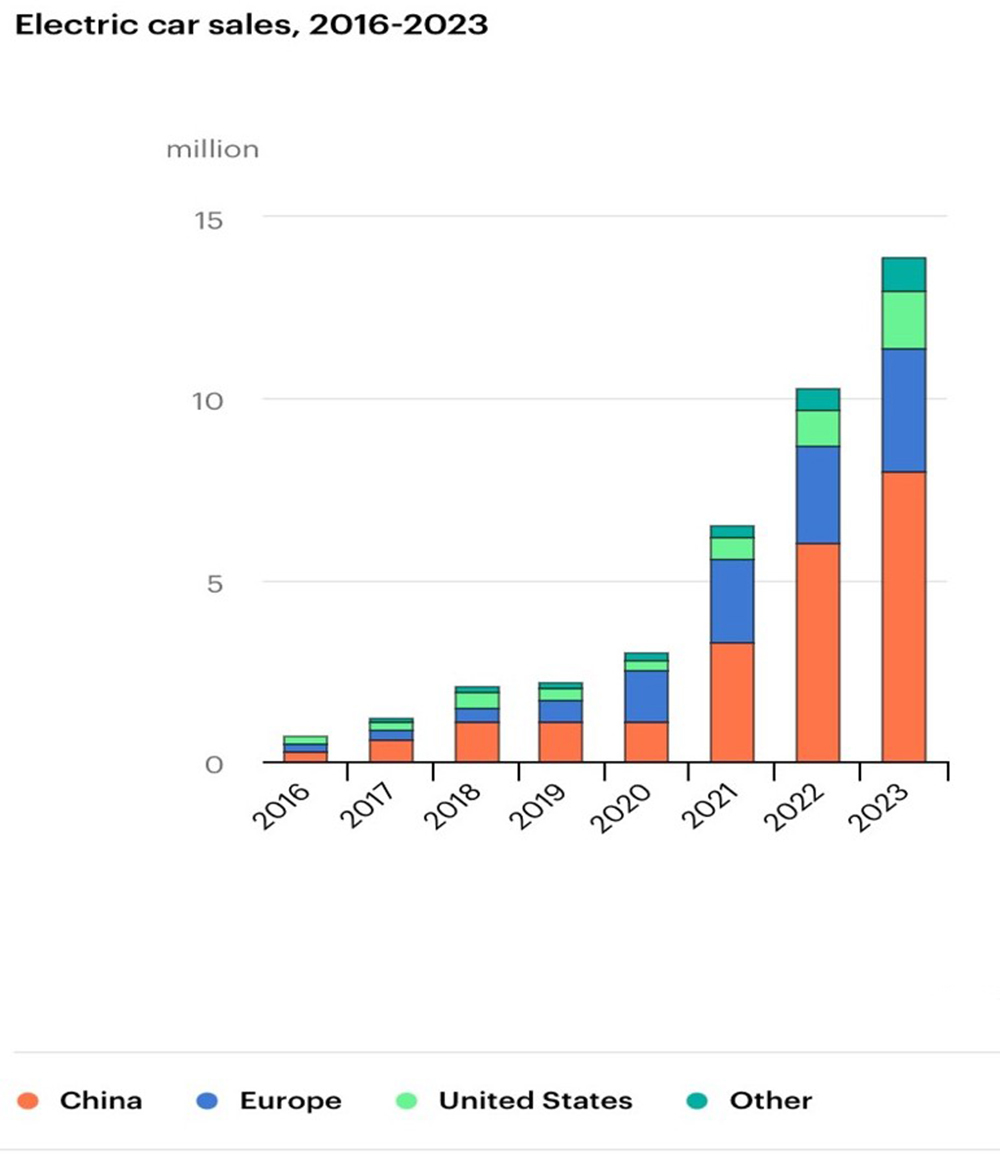 Source: IEA Electric Vehicles 2023.
Source: IEA Electric Vehicles 2023.
- Similarly, the sales of heat pumps are soaring.
- Heat pump sales increased by 13 percent globally in 2021. About 190 million heat pumps were operating in buildings, meeting 10 percent of the heat demand. According to the IEA, heat pumps will nearly double their share of heat in buildings by 2030 at current growth rates.
In conclusion, we have more unresolved problems than solutions. The primary issue is how to help developing and evolving countries invest in mitigation and adaptation. The main contribution will have to come from developed countries, which in large part caused the crisis. The notion that we can preserve public goods only with public money ignores the use (and abuse) of public goods by the private sector. Public funds could be raised by lowering tax deductions for fossil fuel companies. Also, the 15 percent minimum tax on large international companies might be raised for climate initiatives. The developed nations must help fund the green projects in the developing nations, which are also the most vulnerable to climate change. Renewable electric power is cheaper than fossil fuel, and all nations should avoid fossil fuel power, even if they have oil and gas resources. EVs and heat pumps work everywhere, and the current market booms serve to lower prices; however, the essential issue is financing climate mitigation in developing nations. Renewable electric power, EVs, and heat pumps will also help China, Europe, and the US reduce their emissions, hopefully increasing their decarbonisation commitments under the Paris Agreement.
References
1 IEA, (2023), World Energy Investment 2033.

